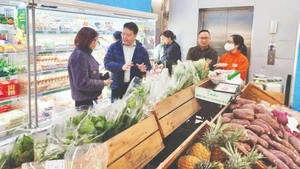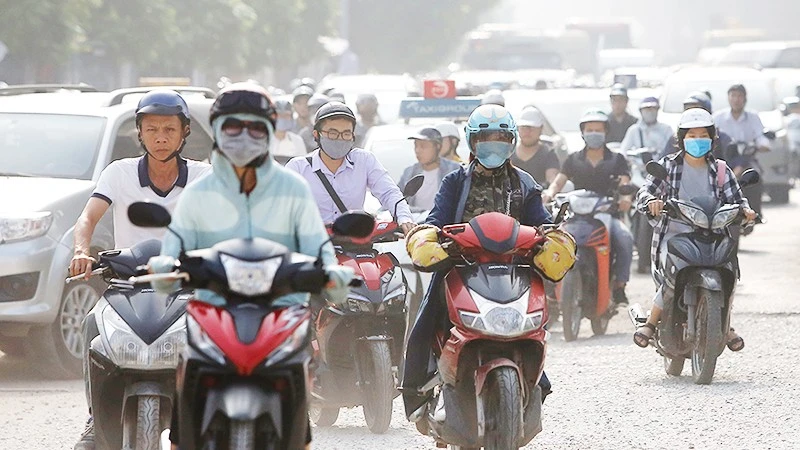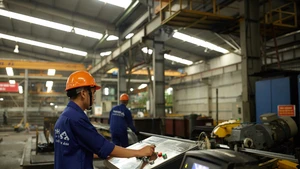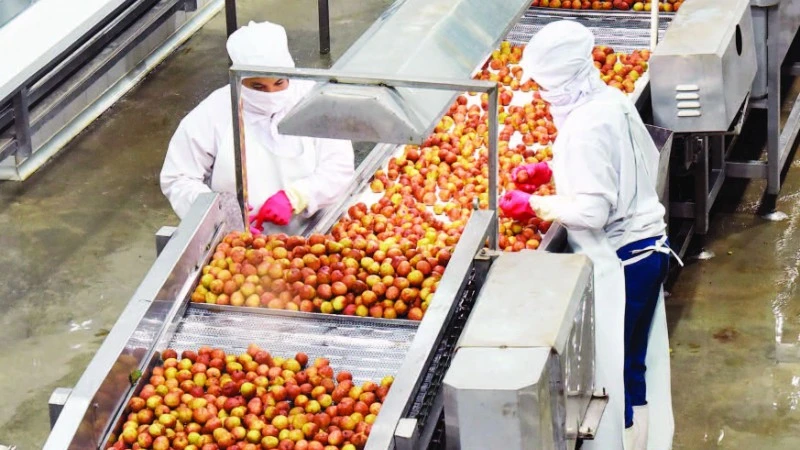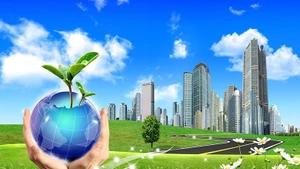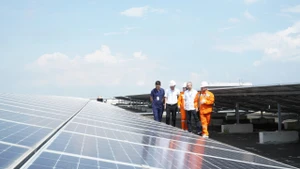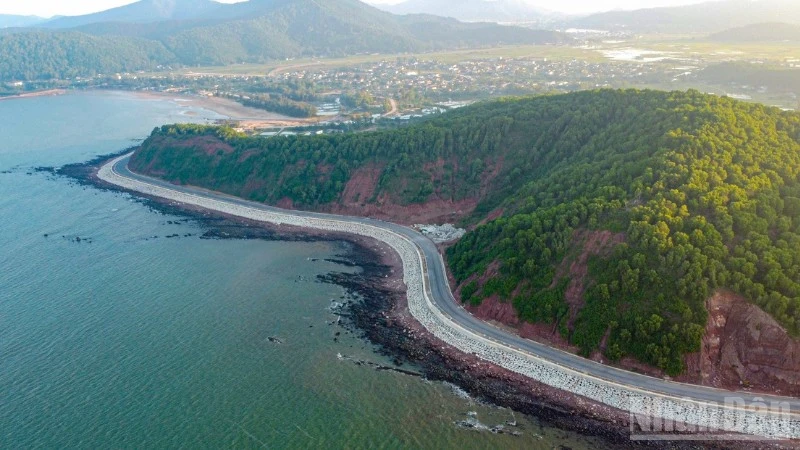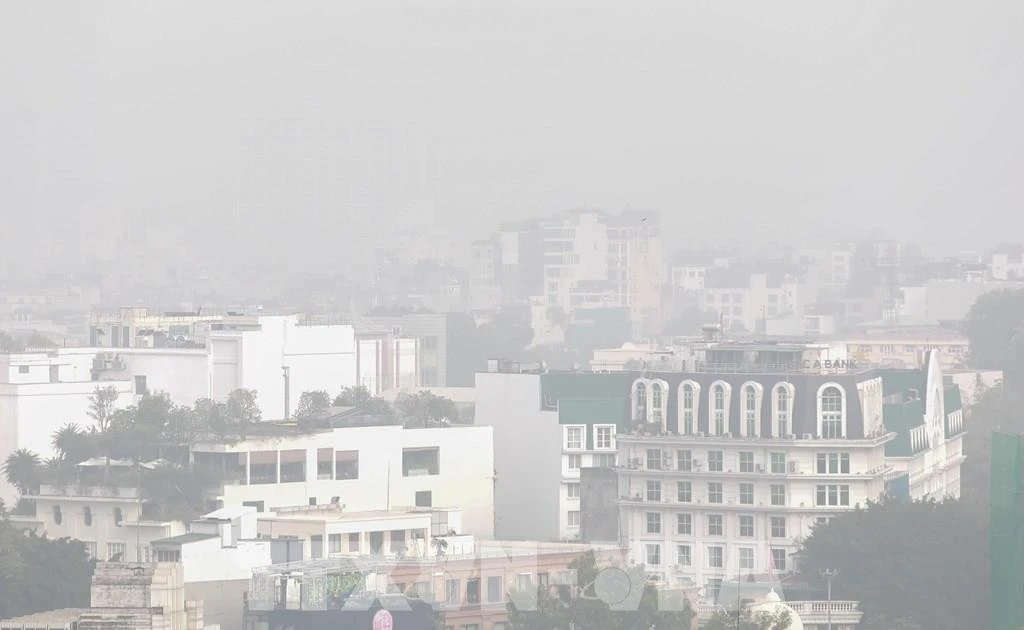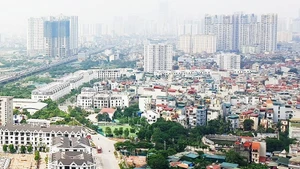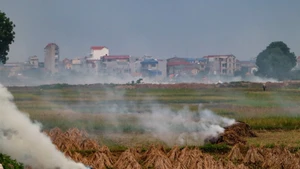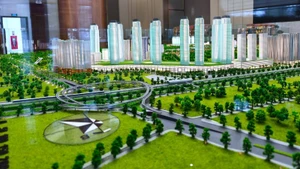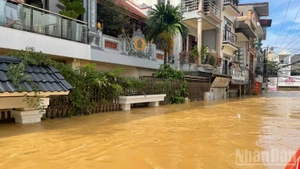Challenges accompanied by opportunities
Pham Thi Hao's farm in Yen Lac District (Vinh Phuc Province) spans nearly 15,000 square metres and includes pig farms, fish ponds, and fruit orchards. The biggest challenge for this farm is treating the waste produced by raising 300 pigs. Previously, due to a lack of effective waste management methods, the waste often emitted odours, polluted the environment, and even flowed into the pond, killing the fish.
Over the past two years, Hao has put bio-safe bedding into the pig pens. The waste has been processed on-site and turned into safe fertiliser for the fruit orchard. As a result, the farm's production model has become circular, with nothing needing to be discarded.
“Previously, we faced great pressure from daily emissions causing environmental pollution. Since adopting the safe farming model, not only has the pressure decreased, but we also have an additional source of organic fertiliser for the orchard”, said Hao.
Circular production models are no longer unfamiliar to the agricultural sector, as more businesses and individuals participate. They understand that challenges also present opportunities. Where there is rapid change, there is sustainable development and better market acceptance.
For example, in the Central Highlands, coffee has long been integral to the lives of local farmers. With fertile soil and a favourable climate, Vietnamese coffee has a leading global export volume.
Although it generates income for the people, coffee cultivation also causes several environmental issues, such as groundwater depletion for irrigation, soil erosion and degradation, and pesticide residue. These phenomena contributed to a gradual decrease in coffee yields over time.
However, that was a story from the past. Nowadays, many farming households have learned to intercrop coffee plants, use bio-products, made from coffee by-products for plant care, and balanced irrigation water use. This progress is due to the Nescafé Plan, an initiative by Nestlé in collaboration with the Ministry of Agriculture and Rural Development since 2011.
Khuat Quang Hung, External Affairs Director at Nestlé Vietnam, noted that Nestlé’s circular economy process for coffee beans has helped the company reduce 13,000 tonnes of carbon emissions annually, save 40% of water, and 30% of energy used in production. Specifically, by using biomass fuel, the company has saved about 40-50 billion VND in energy costs annually.
More importantly, coffee by-products have created value, avoiding environmental discharge. The wastewater reuse rate also reached 65%, with most losses due to evaporation.
Regarding the challenges of the agricultural sector in greenhouse gas emissions, Nguyen Xuan Cuong, former Minister of Agriculture and Rural Development, expressed his concern about over 100 million tonnes of livestock waste, 50 million tonnes of straw waste, and 10 million tonnes of aquaculture sludge, among other unresolved issues. He said that if these seemingly discarded materials are incorporated into a circular economy process, they could be turned into profit. At COP 26, Vietnam committed to reducing emissions by 8% by 2030. Without a circular economy, it will be very difficult to meet this commitment.
Effective policies for circular agriculture
The agricultural sector is promoting emission reduction solutions through plans for transition from traditional production to a circular economy. However, this approach requires a new mindset and faces many challenges and limitations.
Many experts said that circular economy practices in agriculture are still in their infancy and largely spontaneous, and there is a lack of structured policy frameworks to drive them forward. Additionally, practical information and data needed to develop effective policies are still incomplete.
Dr Dang Kim Son, an agriculture expert, suggests that the biggest bottleneck right now is finding ways to innovate the organisational framework for this model. Vietnamese agriculture must overcome challenges related to fragmentation and small-scale operations while adopting. The goal is to find ways for household economies to connect and for various stakeholders to link together within the value chain to create a circular economy.
Nguyen Anh Duong, Head of the General Research Department under the Central Institute for Economic Management, also advises that when considering the development of a circular economy, it is crucial to focus on how to create economic incentives for people, production households, and businesses, as well as how to encourage them to participate and benefit from the circular economy. Minister of Agriculture and Rural Development Le Minh Hoan, has affirmed that green, ecological, and circular agriculture are irreversible trends.
“We need to rethink that growing rice is for not just selling rice but also selling other products from ash, husks, and straw. Farmers and cooperatives must also rethink and enhance processing and utilising rice by-products to create other products to increase income. This is the trend towards circular, green, and ecological agriculture that aligns with nature. All change is difficult, but without change, the challenges will be even greater”, said Minister Hoan.
The impacts of climate change, resource scarcity, environmental degradation, and diseases are forcing countries to rethink their strategies. Circular agriculture is both a requirement and a solution for sustainable agricultural development, aligning with international commitments and national tasks for green and sustainable development.


